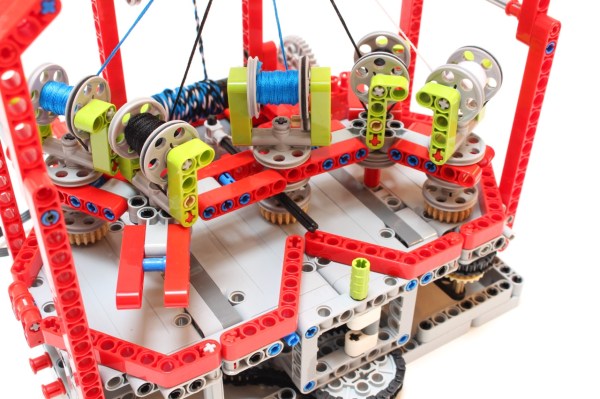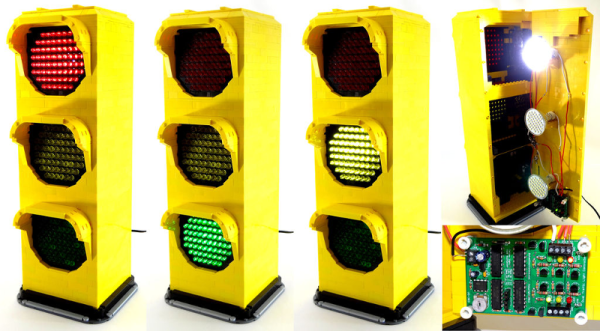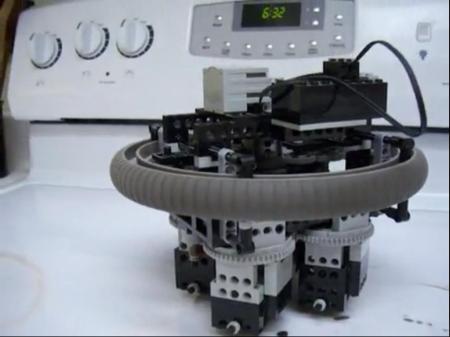We love a good LEGO build as much as anyone, but Technics takes it to the next level in terms of creating working mechanisms. And nobody takes Technics as far as [Nico71], as evidenced by his super-fast Technics rope braiding machine.
The last time we saw one of [Nico71]’s builds, it was also a LEGO Technics rope-making machine. At the time, we called it a “rope-braiding machine” and were taken to task in the comments since the strands were merely twisted to make the final product. [Nico71] must have taken that to heart, because the current build results in true braided cordage. That trick is accomplished by flying shuttles that are not attached to either of the two counter-rotating three-spoked wheels. The shuttles are transferred between the two wheels by a sweeper arm, each making a full revolution with one wheel before being transferred to the other. Each shuttle’s thread makes an intertwining figure-eight around the threads from the two fixed bobbins, and the result is a five-strand braided cord. The whole machine is mesmerizing to watch, and the mechanism is silky smooth even at high speeds. It seems like a much simpler design than the previous effort, too.
You’ve got to hand it to builders like [Nico71] that come up with fascinating machines while working within the constraints of the Technics world. And those that leverage the Technics platform in their builds can come up with pretty neat stuff, like this paper tape reader for a music machine.
Continue reading “LEGO Technics Machine Produces True Braided Rope”





 The core of the project is the
The core of the project is the 












